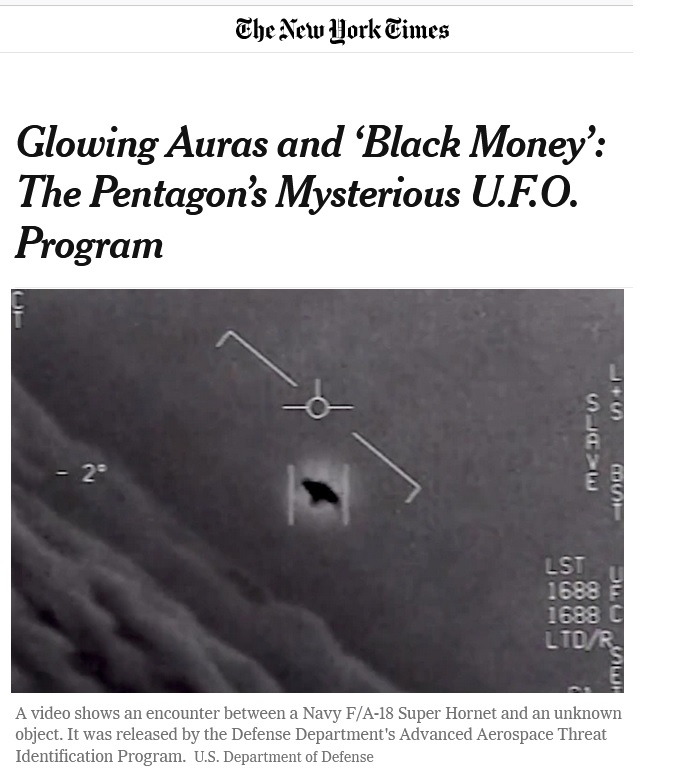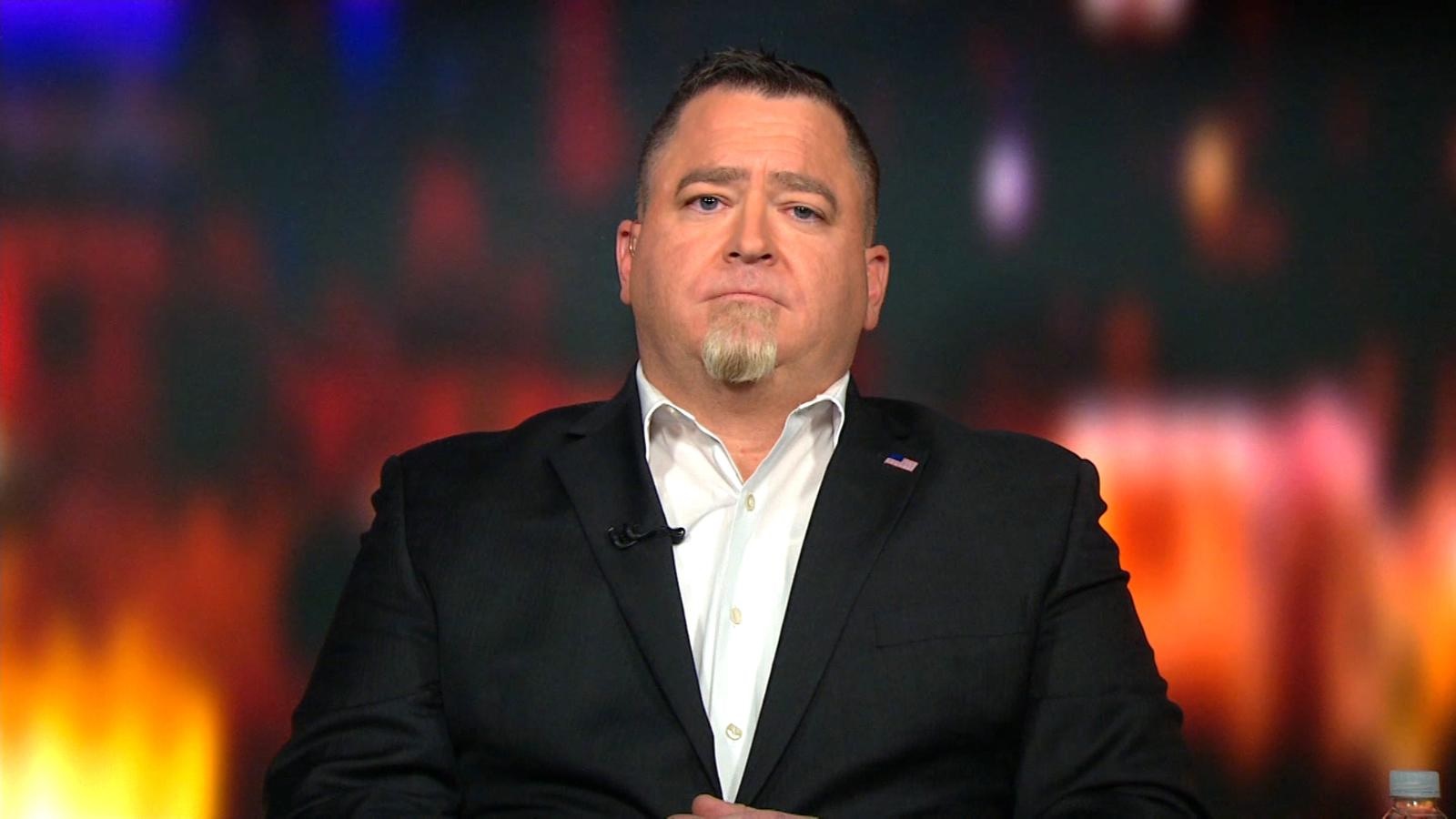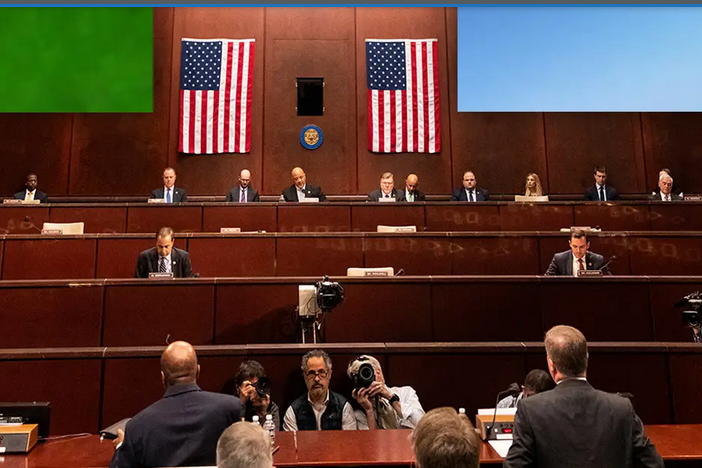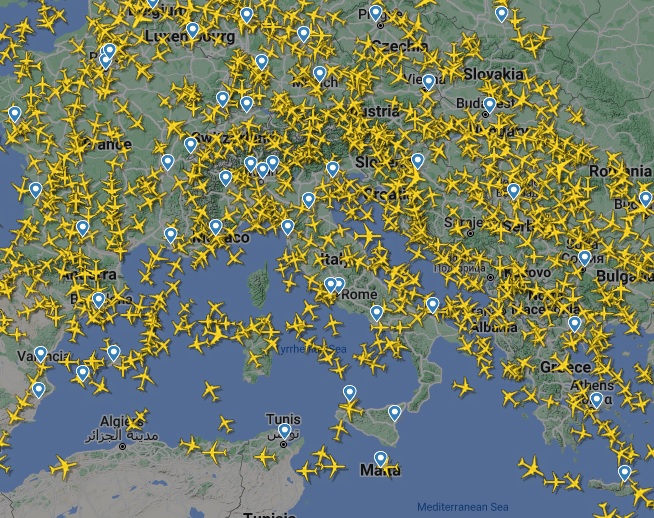The 21st century may die laughing when it looks back on many things we have done. This [the UFO study] may be one.
Dr. Robert Condon, from the article "Flying Saucer Fiasco" by John G. Fuller on Look Magazine of May 14, 1968Readers who follow UAP affairs know that since the beginning of the contemporary era of the phenomenon in 1947, a heavy secrecy has been imposed on it by military and intelligence authorities. The secrecy was soon accompanied by an artificially-induced attitude of ridicule and discredit. Secrecy and ridicule worked synergistically with the effect of keeping the phenomenon far from public awareness for a good three-quarters of a century.
Those same readers know that a disclosure process informally began in late 2017 with the now historic New York Times article of Dec. 16, 2017. The article brought into the sunlight a not formally but in fact secret UFO study program conducted within the government by the US MoD for which $22 million had been spent, made its latest director - Luis Elizondo - known, and also made known the first official UFO footage.

The historic New York Times article of Dec. 16, 2017 that started the process of 'disclosure' (From nyt.com)
In this way, world public opinions learned in one fell swoop that UFOs are real and that the U.S. government cares a great deal about the issue, despite decades of claims to the contrary, so much so that it has been studying it on the sly, while also spending millions of public dollars on it. Especially, the matter aroused particular and understandable attention among US taxpayers, when they learned of the millions of public dollars - spent without any parliamentary debate - on something that had always been denied, or at best made to look like hogwash.

Luis Elizondo, former director of the AATIP Program (From ufo.com.br)
A further factor that struck the audience as new details about this semi-secret project emerged is that of the extraordinary capabilities demonstrated by the UAPs: ability to navigate indifferently in the atmosphere and hydrosphere, extreme flight performance with seemingly immediate acceleration, acute angle turns, hypersonic speed without any boom and invisibility, on command, from radar.
Even more importantly, the interest that has followed this "cognitive clearance" of the phenomenon has affected institutions. As evidence of concrete interest, there were a number of classified autidions at the US Senate, and in a show of equally concrete bipartisan political will, U.S. senators have included specific measures in the NDAA22 Act to create a high-level military office for the permanent study of UAP and for periodic reporting to Congress. As a result of this, we recently witnessed a historic hearing on UAP in the U.S. Congress by two high-level officials of the Pentagon, Ronald S. Moultrie and Scott W. Bray.

The Moultrie and Bray audition on UAP at the US Senate

The speakers who participated in the audition, along with Senator Girão, the promoter of the event (From ufo.com.br)
NASA's unprecedented interest in the UAP phenomenon is due to the initiative of its current Administrator. Former Senator and former astronaut Clarence William (Bill) Nelson had already shown a specific sensibility towards the phenomenon. Indeed, in 2019, referring to the reading of the classified portion of the UAP Task Force's Preliminary Report when he was serving as Senator, he said that "his hair stood on end", while in 2021 in an interview he stated "Are we alone? Personally, I don't think we are."
-001.jpg)
Bill Nelson, former Senator and current NASA Administrator (From wikipedia)
Nelson's NASA therefore intends to carry out serious research by acting with scientific rigor and operating without preconceptions of any kind. "The study will focus on identifying available data, how to best collect future data and how NASA can use these data to move the scientific understanding of UAPs forward," Thomas Zurbuchen, NASA's Associate Administrator for Science recently said.
Head of the project will be astrophysicist David Spergel, president of the Simons Foundation in New York City and former chair of Princeton University's Astrophysics Department. Daniel Evans, Assistant Deputy Associate Administrator for Research at NASA’s Science Mission Directorate and responsible NASA executive, will be in charge of defining the UAP study architecture.
Defining this new effort as "high-risk, high-impact", the Agency said it was aware of the peculiar implications of the issue, the most sensitive of which is that of national security. Dealing with the security of its own country is not among NASA's institutional duties, but the new effort will still provide an important complement and support to the UAP study activities of national security agencies, specifically the new Pentagon UAP office, the AOIMSG.
Another overarching goal of NASA is to deepen credibility in this field of study. “There is a great deal of stigma associated with UAP among our naval aviators and aviation community,” said Evans.
“One of the things we tangentially hope to do as part of this study, simply by talking about it in the open, is to help to remove some of the stigma associated with it, and that will yield obviously, increased access to data, more reports, more sightings.”
Another aspect on which the project could have a positive impact and which instead falls directly under NASA's purview is that of air navigation safety, an aspect of no small importance at a time in history when the skies are increasingly crowded.

A frame from Flightradar24.com showing how crowded the skies are
Not a study of massive proportions then, but well conceived from the start, well focused, and with important repercussions in at least two major areas.
Kudos then to Bill Nelson's NASA which, leading by example, has shown everyone how the issue of the enduring mystery of UAPs - or UFOs - should be approached, namely by addressing the issue seriously, aiming for the truth without bias and operating with scientific rigor.
At present it is difficult to make predictions about what the results of this study might be, givent he typically multi-faceted nature and complexity of the UFO/UAP phenomenon. However, let us try to make a few hypotheses, both in case the study comes to definite conclusions and in case it provides only partial contributions of knowledge, considering the three prevailing hypotheses to explain the phenomenon, namely hi-tech artifacts of foreign powers, meteorological phenomena and artifacts of extraterrestrial origin.
- Hypothesis of Hi-Tech artifacts of foreign powers. If the study confirms this hypothesis as the explanation for the phenomenon, besides making its deniers and reductionists happy, it would be an attestation of a colossal failure for the entire U.S. intelligence community, which would have grossly and glaringly failed, moreover on the basis of futile motives, to understand and identify an issue of existential importance to the country. In addition to the need to run for cover by revising the entire doctrinal framework of the entire U.S. intelligence apparatus, there would be an equally great need to run just as quickly for cover to close the enormous strategic gap that would have accumulated in the meantime.
- Hypothesis of the atmospheric phenomena If the study confirms this hypothesis as an explanation of the phenomenon, again reductionists and deniers would be happy, but it should be mentioned that this hypothesis definitely appears to be the weakest, particularly in view of the technological aspects and intelligent behavior aspects of the phenomenon's manifestations.
- Extraterrestrial hypothesis If the study confirms this hypothesis as an explanation for the phenomenon, ufologists, who for the most part have always supported this hypothesis, would surely be happy. But the confirmation of this hypothesis, which appeared from the very beginning (read 1947) to be closely connected with the phenomenon of unidentified aerial/aerospace objects/phenomena, would be a fact of such colossal magnitude and disruptive power that it would likely be given with great caution and with the classic dropper to public opinion. More importantly, this would be a non-answer, as it would in turn produce a myriad of further questions. For this reason, I will not elaborate further on this issue here, which I plan to explore in a separate article.
Should the study fail to provide definitive explanations, a useful partial contribution would likely consist of new knowledge that would make it possible to identify technological aspects or hitherto unknown developments in this field by foreign powers.
Should the study make only partial contributions, it could however yield useful insights into as-yet unknown or poorly understood aspects of the atmosphere, which is certainly useful in times of climate change when the more we know about the atmosphere the better.
Instead, if the study were to make only partial contributions in this fields, one could assume the acquisition of useful scientific-technological insights into the construction principles of what appear to be aircraft that fly without using known techniques, and perhaps also of their propulsion systems.
In conclusion, let's turn back for a moment to that Condon's 1963 sentence that opened this article. Now that in this century someone has shown how good UFO studies should be conducted, we are indeed dying laughing, not at Dr. Condon's study itself, but at his unfortunate 'prophecy'.
So, with that said, a big Bravo! to NASA and its Bill Nelson is definitely in order.
___________________________
